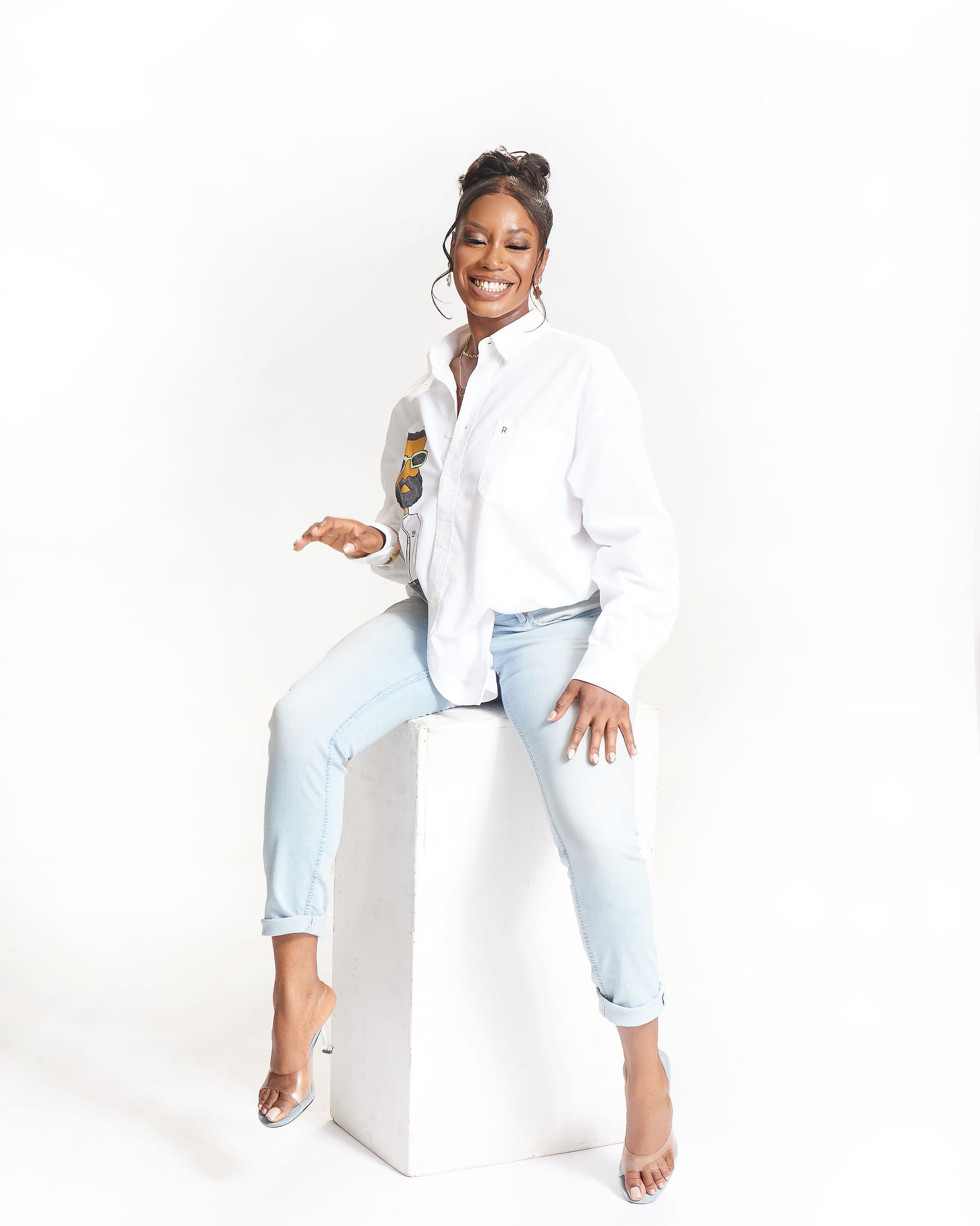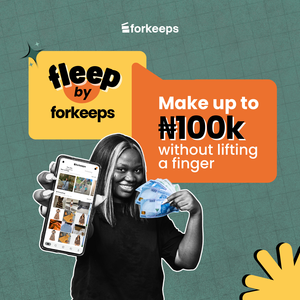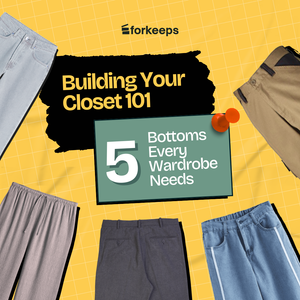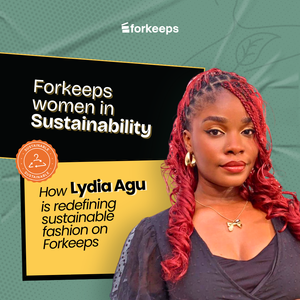As fashion trends rapidly shift, thrift shopping has emerged as a refreshing alternative, offering unique style, affordability, and sustainability.
For Solape, a seasoned thrift enthusiast, thrifting started as a spontaneous passion and grew into a meaningful exploration of sustainable fashion. In this interview, we dive into her journey, her views on the future of thrift fashion, and how technology, social media, and sustainability are all reshaping how we shop.
Forkeeps: Can you share your journey into the world of thrifting?
Solape: My thrifting journey started as more of a casual fling than a serious relationship—I’d pick up things randomly when something unique caught my eye in the major Lagos markets. But over the years, I realised that thrifting wasn’t just shopping; it felt like going on a treasure hunt where each find had a story. About seven years ago, I even tried to go “pro” by thrifting designer shoes from Vespa Market (one of the big thrift spots here), hoping to turn it into a business. But let’s just say my 'business' took a nosedive! I ended up gifting everything to friends, and that’s when I knew I was in it for the thrill, not the profit.

Forkeeps: What inspired you to start?
Solape: Growing up in Lagos, I was surrounded by this amazing blend of cultures and styles, so thrifting felt natural. I’d walk through these busy markets—Yaba, Balogun, Alaba—and just stumble upon items with so much character and uniqueness. The idea of finding pieces no one else had was too exciting to ignore. Plus, the designer shoes incident—where I bought things to give them away later—showed me how much I enjoyed curating unique finds and sharing them with others.
Forkeeps: How do you see thrift fashion evolving over the next five years?
Solape: Thrift fashion will become more mainstream and sophisticated, especially with the rise of platforms like Forkeeps, Depop, and ShopMy! I imagine curated collections that make it easier for people to find their style without losing that 'I found it first!' feeling. It might also become more integrated with local styles and unique pieces, almost like mini boutiques showcasing hidden gems instead of endless piles to dig through. I think more people will see thrifting as a way to craft their own personal style stories and rebrand their style and closets rather than just a cheaper way to shop.
Forkeeps: What role do you think technology and social media will play in shaping the future of thrift shopping?
Solape: Social media is already turning thrifting into a community experience. People share thrift hauls, styling tips, and market reviews, which brings thrift lovers together. With tech advancements and apps like Forkeeps they could suggest where to find certain items or even connect thrifters based on style preferences. Social media will keep amplifying thrifting as this fun, sustainable, and stylish choice, especially as people share their finds and styling ideas with audiences who value individuality.
Forkeeps: With fashion trends moving so quickly, how can thrifting maintain its appeal and relevance?
Solape: Thrifting thrives because it isn’t just about trends—it’s about finding pieces that feel like they were waiting for you. As more people lean toward exploring and upgrading their unique styles and building their dream capsule closets over fast trends, thrifting will continue to appeal to those looking to stand out. And with fashion cycles moving faster than ever, thrifting offers a sustainable counterpoint, giving clothes a second life. It’s like giving the clothes their own 'encore,' and people are increasingly into that!

Forkeeps: Do you believe the rising interest in sustainability will make thrifting more mainstream, and how could that impact the industry?
Solape: Yes, sustainability is definitely pushing thrifting into the spotlight. People are waking up to the impact of fast fashion and they’re craving ways to make better fashion choices anyway since those fast trends fade quick. As thrifting becomes more mainstream, We will see thrift markets become better organised and maybe even a little pricier, as demand rises (though I hope not). But overall, it’ll push the industry to create a more positive, eco-friendly culture around secondhand fashion.
Forkeeps: How can the thrift community and brands collaborate to create a more sustainable future in fashion?
Solape: There’s huge potential for brands and the thrift community to join forces! Brands could encourage upcycling by creating sustainable styling guides and exchange programs that make thrifting and upcycling more accessible and enticing. Collaborations on eco-collections or hosting 'secondhand festivals' where people can trade and style pre-loved items would also be amazing ways to bring the best of both worlds together for a greener future.
Forkeeps: What are the biggest challenges thrift fashion faces in keeping up with the broader fashion industry?
Solape: Thrift fashion’s charm is also its challenge—it’s spontaneous, a bit unpredictable, and depends heavily on patience and luck. Quality control and consistent supply can be hard to manage when you’re dealing with secondhand items. Plus, because each piece is unique, it’s tough to have that 'instant gratification' of finding exactly what you want in the moment. If thrift fashion can find a balance between maintaining its charm and becoming more accessible, it’ll keep growing strong.
Forkeeps: What advice would you give to future generations about embracing thrifting and secondhand fashion?
Solape: Don’t just shop—explore! Thrifting is more than buying clothes; it’s about discovering items with a story, which is why I love the Gen-Z Alte Community, lol. Sometimes the best pieces are the ones you never planned to find. Embrace the process and be open to the thrill of the hunt because you’ll often end up with treasures you’d never get anywhere else. Each item can be part of your personal style legacy.
Forkeeps: Are there any innovations or shifts you’re excited to see within thrifting or fashion that could shape the industry’s future?
Solape: I’m excited about seeing more tech-driven upcycling, especially the ones making thrift items more accessible. Also, imagine being able to design or upcycle pieces virtually before taking them to a tailor, or platforms like Forkeeps App where thrifters could share, swap, or sell their finds globally (a girl can only dream). These shifts could make thrifting feel more personal and fun, encouraging everyone to get involved in sustainable fashion in a more accessible way.
Solape’s journey into thrift fashion highlights the appeal of style that’s personal, sustainable, and endlessly creative. Thrift fashion, with its unique stories and individualised pieces, offers an alternative to fast fashion that’s both eco-friendly and full of character. As technology and social media continue to shape how we shop, thrifting is poised to become a leading trend in sustainable fashion, bringing together style, community, and responsibility in ways that resonate with today’s conscious consumer.







